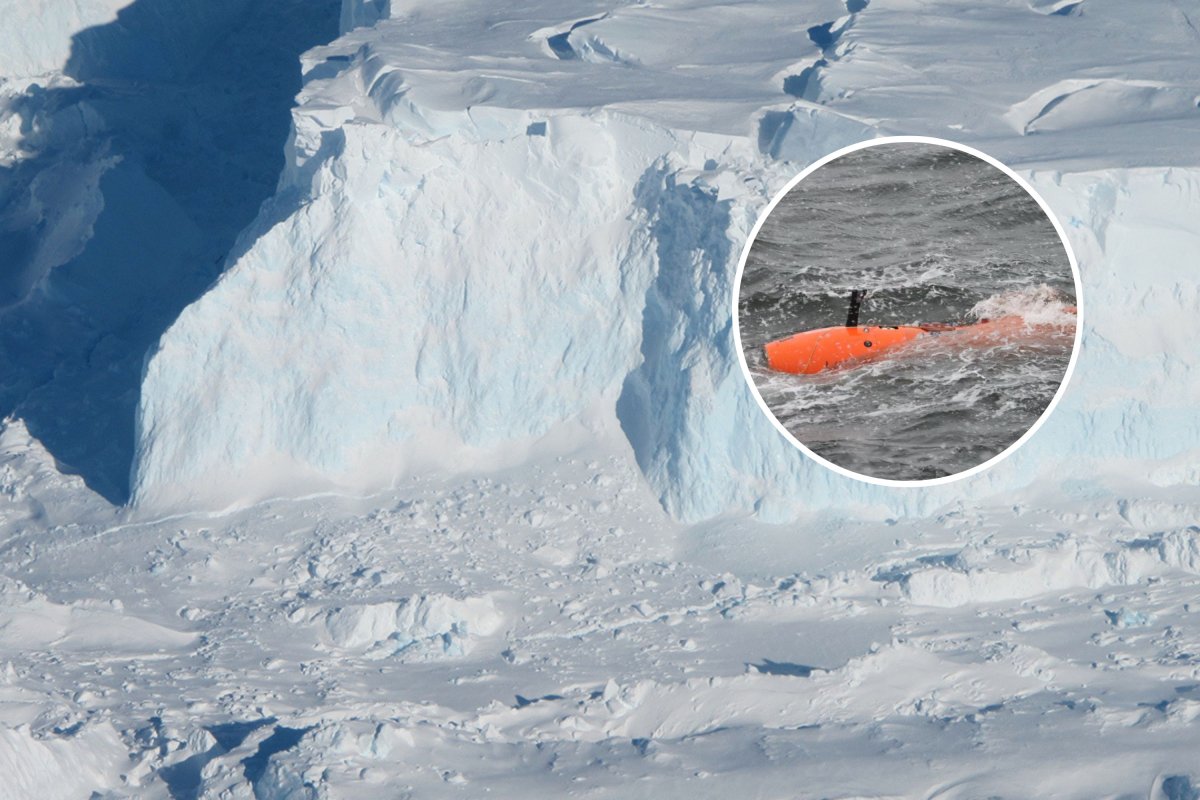An underwater vehicle has disappeared without a trace as it explored under the "Doomsday Glacier" in Antarctica.
The 23-foot unmanned underwater vehicle (AUV), named Ran, was on a mission studying the Thwaites Glacier when it went missing this weekend.
Ran is one of only three similar vehicles in the world, containing technology and sensors that allow it to measure and document the water conditions underneath glacial ice over long periods of time, and is estimated to cost about $3.6 million.

"This was the second time we took Ran to Thwaites Glacier to document the area under the ice. Thanks to Ran, we became the first researchers in the world to enter Thwaites in 2019, and during the current expedition we have visited the same area again. Even if you see melting and movements in the ice from satellite data, from Ran we get close-ups of the underside of the ice and information about exactly which mechanisms are behind the melting," Anna Wåhlin, a professor of oceanography at the University of Gothenburg and member of the research team, said in a statement.
The Thwaites Glacier, which is part of the West Antarctic Ice Sheet (WAIS), is the widest glacier on Earth, and has a surface area of about 74,000 square miles, larger than the state of Florida and twice the size of Maine. Thwaites is also sometimes known as the Doomsday Glacier due to the impact it would have on global sea levels if it were to melt completely. It's thought that sea levels would rise by an average of 25 inches—over 2 feet—across the world if the glacier were to collapse entirely.
There are also fears that Thwaites collapsing may trigger a chain reaction of other glaciers in the same area, possibly leading to several meters of sea level rise globally.
"A sea level rise of several meters would inundate many of the world's major cities—including Shanghai, New York, Miami, Tokyo and Mumbai. It would also cover huge swathes of land in coastal regions and largely swallow up low-lying island nations like Kiribati, Tuvalu and the Maldives," Ella Gilbert, a postdoctoral research associate in climate science at the University of Reading, U.K., wrote in an article for the Conversation in 2021.
Thwaites is already currently responsible for about 4 percent of global sea level rise, as it loses a net of roughly 50 billion tons of ice every year, and has lost about 1000 billion tons since the year 2000.
Ran investigates glaciers like Thwaites during dives underneath the ice, which can measure between 650 and 1,640 feet thick. Usually, Ran is not in constant contact with the research vessel—the South Korean icebreaker RV/IB Araon—on the surface, instead having its route preprogrammed and navigating its way back to the ocean surface.
"Ran is one of only a few existing large autonomous underwater vehicles that are used for research. It has some unique capacities, including very good underwater navigation, which enables it to do long missions in environments that cannot be accessed by a ship. For example, the ice shelf cavities in Antarctica," Wåhlin told Newsweek.
"It also has ability to gather high-resolution maps of the underside of these floating glaciers, which has given us a very detailed view of the ice base for the first time. It has in total 38 different sensors that measure physical, chemical and biological properties of the ocean, and [the] ability to take water samples back to the ship."
Ran had previously dived under Thwaites several times, but this time, something went awry, and Ran did not appear at the surface when it should have. Searches using acoustic search equipment, helicopters, and drones were unsuccessful, and Ran remains lost beneath the ice.
"Sadly, we will most likely never know for sure [what happened to Ran]. Our main hypothesis right now is that it detected something in the water below the ice that it mistook for seabed, and that this triggered a series of avoidance maneuvers as it thought it was running into a too narrow [a] space," Wåhlin said.
"After doing a number of avoidance maneuvers, it will try to backtrack to the place where it came from. However, if the problems persists during backtracking it could have been forced into emergency state where it, in order to conserve energy, shuts down most functionality except communication.
"Since we could not communicate at all with it, this must have happened in the part of the mission that was quite far from the opening. The only other explanation we can think of is that it had a major hardware malfunction. However, our experience is that it is a very reliable system so we do not really believe in that theory."
The team is not optimistic that they will find Ran again, but are grateful for the data it gathered thus far, as well as the support of the ship and expedition management.
Do you have a tip on a science story that Newsweek should be covering? Do you have a question about glaciers? Let us know via science@newsweek.com.
Update 2/5/24, 1:19 p.m. ET: This article was updated with comments from Anna Wåhlin.
Uncommon Knowledge
Newsweek is committed to challenging conventional wisdom and finding connections in the search for common ground.
Newsweek is committed to challenging conventional wisdom and finding connections in the search for common ground.
About the writer
Jess Thomson is a Newsweek Science Reporter based in London UK. Her focus is reporting on science, technology and healthcare. ... Read more
To read how Newsweek uses AI as a newsroom tool, Click here.






